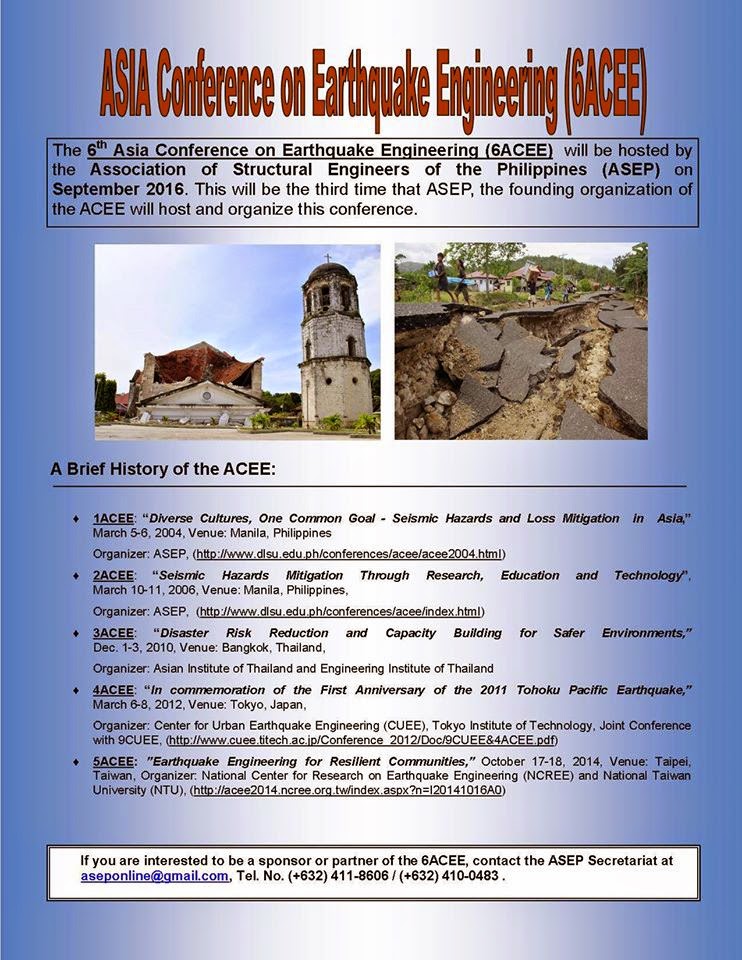“A Proposed Methodology for Quantifying the Environmental Impacts of
Structural Elements of Standard Bridge Designs”
A thesis prepared and submitted by:
Kevin Lawrence M. Atienza
Carla Maria B. Gonzalez
Jorge Jason K. Joaquino
Mitchel Krisia R. Martinez
April 2015
To take into account the environmental sustainability aspect of bridge designs, the study presented a methodology to numerically measure the amount of emission different bridges produce. The researchers gathered a total of eighteen bridge plans of various structural systems such as Reinforced Concrete Deck Girder (RCDG), Pre-stressed Concrete Deck Girder (PCDG), Reinforced Concrete Slab, Steel Girder, and Reinforced Concrete Box Culvert (RCBC). Each plan included a bill of quantities that summarized the type of material and the amount used upon construction. Using LCIA database Ecoinvent v3.1, quantities were translated into corresponding environmental impacts namely Acidification, Eutrophication, Global Warming Potential, Photochemical Oxidant Formation, Stratospheric Ozone Depletion, and Depletion of Abiotic Resources. Numerical results were divided by the total area of the bridge leaving one square meter of bridge area as the functional unit of choice.
To normalize these values, each environmental impact equivalent was divided by the largest value, which was produced by the RCBC bridge design. An Analytical Hierarchy Process (AHP) was conducted to produce the weighting factors of each impact. The normalized values were then multiplied by their corresponding weighting factors and added up to produce an Environmental Impact Score (EIS) that was used to rank and compare the environmental performance of each bridge. In this particular study, the RCDG bridge design generated the lowest score with a value of 0.451, thus indicating that it produced the least amount of impact. On the other hand, the RCBC bridge design produced the largest amount of impact with an EIS of 0.825. Through the proposed methodology of conducting a Life Cycle Impact Assessment (LCIA) and producing an EIS, structural engineers will be able quantify the environmental impacts of different bridge structural systems and in turn apply sustainability in the decision making of future bridge projects.
To normalize these values, each environmental impact equivalent was divided by the largest value, which was produced by the RCBC bridge design. An Analytical Hierarchy Process (AHP) was conducted to produce the weighting factors of each impact. The normalized values were then multiplied by their corresponding weighting factors and added up to produce an Environmental Impact Score (EIS) that was used to rank and compare the environmental performance of each bridge. In this particular study, the RCDG bridge design generated the lowest score with a value of 0.451, thus indicating that it produced the least amount of impact. On the other hand, the RCBC bridge design produced the largest amount of impact with an EIS of 0.825. Through the proposed methodology of conducting a Life Cycle Impact Assessment (LCIA) and producing an EIS, structural engineers will be able quantify the environmental impacts of different bridge structural systems and in turn apply sustainability in the decision making of future bridge projects.
Special Acknowledgement:
DPWH Staff and Engineers for sharing bridge data,
Dr. Mike Promentilla (DLSU ChE Dept) for guidance in the AHP procedure












